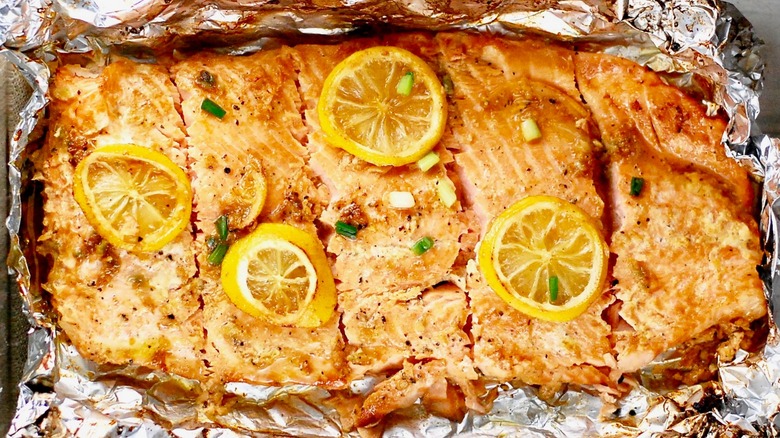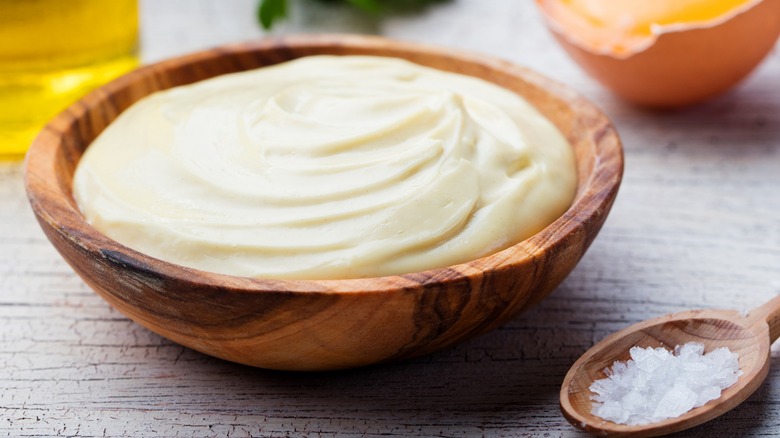Mayo Is Your Secret Weapon For The Most Crisp Baked Salmon
Salmon and mayonnaise are two ingredients that you might not be accustomed to using together in the same recipe. It may sound like a strange combination, but there are perks to combining the two ingredients when it comes to making baked salmon. When baked, the creamy, tangy condiment enhances the fish by giving it more flavor while ensuring it's moist on the inside — yet also keeps it perfectly crisp on the outside. So, how does it work? Mayonnaise is mostly fat with its main ingredients being an emulsion of oil and eggs.
The water in the mayo evaporates during cooking, leaving the concentrated fats and proteins behind to coat the salmon, creating a uniform crispy layer on the outside. It's the same reason why some swap butter for mayonnaise when making grilled cheese. The rest of the mayo is absorbed by the salmon, giving it moisture and helping your go-to seasonings penetrate the meat, in the same way it does with fried chicken or pan-seared steaks. And if you're concerned about tasting mayo, the flavors don't stick around, so you can easily use this trick when serving the dish to someone who detests the condiment.
How to use mayo with baked salmon
The trick to making crispy baked salmon with mayonnaise is to use the right amount of the creamy condiment. If you use too much, it could have the opposite effect. For a 2 to 3-pound whole salmon filet, for example, you should only need about ½ cup of mayonnaise. If you're using smaller cuts, 1 tablespoon for every 6-ounce filet should be sufficient.
For the mayonnaise, a full-fat variation is best because the fat is what makes the magic happen so try to stay away from "light" or "reduced fat" mayo for this recipe. You can use your favorite brand of plain mayonnaise or kick up the spice level a notch with a different variety like chipotle or sriracha mayo. Or, mix hot sauce with the regular mayo that's already in your fridge.
When it's time to cook, combine the mayonnaise with your favorite spices, or smear the mayo on the fish separately and sprinkle the seasonings on top. If you're cooking skin-on salmon and want to ensure that the bottom is also crispy, be sure to pat the skin dry before cooking. Then, bake it skin-side down on a baking sheet lined with parchment paper and add a little olive oil to prevent it from turning soggy.

